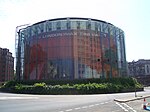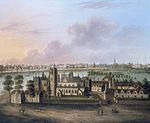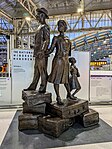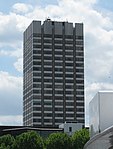Royal Waterloo Hospital for Children and Women
1816 establishments in England1976 disestablishments in EnglandChildren's hospitals in the United KingdomDefunct hospitals in LondonEngvarB from October 2017 ... and 8 more
Grade II listed buildings in the London Borough of LambethHealth in the London Borough of LambethHistory of the London Borough of LambethHospital buildings completed in 1816Hospitals established in 1816University of Notre DameWomen's hospitalsWomen in London

The Royal Waterloo Hospital for Children and Women was a hospital located on the corner of Waterloo Bridge Road and Stamford Street near Waterloo station in London, England. Closed in 1981 it is now a dormitory building for the London branch of the University of Notre Dame.
Excerpt from the Wikipedia article Royal Waterloo Hospital for Children and Women (License: CC BY-SA 3.0, Authors, Images).Royal Waterloo Hospital for Children and Women
Stamford Street, London Lambeth (London Borough of Lambeth)
Geographical coordinates (GPS) Address External links Nearby Places Show on map
Geographical coordinates (GPS)
| Latitude | Longitude |
|---|---|
| N 51.5052 ° | E -0.1132 ° |
Address
Conway Hall
Stamford Street 160
SE1 9NH London, Lambeth (London Borough of Lambeth)
England, United Kingdom
Open on Google Maps











